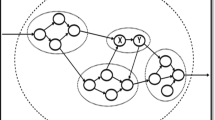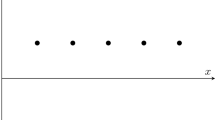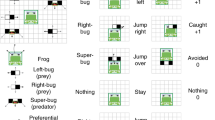Abstract
An epistemic account of constitutive relevance lists the criteria by which scientists can identify the components of mechanisms in empirical practice. Three prominent claims from Craver (Explaining the brain: mechanisms and the mosaic unity of neuroscience, Oxford University Press, Oxford, 2007) form a promising basis for an account. First, constitutive relevance is established by means of interlevel experiments. Second, interlevel experiments are executions of interventions. Third, there is no interlevel causation between a mechanism and its components. Currently, no account on offer respects all three claims. I offer my causal situationist account of constitutive relevance that respects the claims. By situating a part of a mechanism on the causal chain between the mechanism’s input and output, components can be identified with interventions, without the interventions suggesting interlevel causation. The causal situationist account is the only account on offer so far that clearly fits within Craver’s (2007) framework.


Similar content being viewed by others
Notes
Assuming the relevant background conditions are present. One’s heart must be beating, for example, for one’s mechanism for motion perception to operate at all.
One noteworthy exception is an amplifier whose transistors operate in parallel, and thus do not comprise a single causal chain, but are nevertheless components (Wimsatt 2007, pp. 281–287).
Diagrams of the interventions performed in interlevel experiments that are similar to Fig. 2b can be found in Bechtel (in press).
References
Baumgartner, M., & Casini, L. (2017). An abductive theory of constitution. Philosophy of Science, 84, 214–233.
Baumgartner, M., & Gebharter, A. (2015). Constitutive relevance, mutual manipulability, and fat-handedness. British Journal for the Philosophy of Science, 67, 731–756.
Bechtel, W. (in press). The epistemology of evidence in cognitive neuroscience. In R. Skipper, C. Allen, R. A. Ankeny, C. F. Craver, L. Darden, G. Mikkelson, & R. Richardson (Eds.), Philosophy and the life sciences: A reader. Cambridge: MIT Press. https://mechanism.ucsd.edu/epist.evidence.bechtel.july2004.pdf
Bechtel, W., & Abrahamsen, A. (2005). Explanation: A mechanist alternative. Studies in History and Philosophy of Biological and Biomedical Sciences, 36(2), 421–441.
Britten, K. H., Shadlen, M. N., Newsome, W. T., & Movshon, J. A. (1992). The analysis of visual motion: a comparison of neuronal and psychophysical performance. Journal of Neuroscience, 12(12), 4745–4765.
Craver, C. F. (2007). Explaining the brain: Mechanisms and the mosaic unity of neuroscience. Oxford: Oxford University Press.
Craver, C. F., & Bechtel, W. (2007). Top-down causation without top-down causes. Biology and Philosophy, 22(4), 547–563.
Gebharter, A. (2017). Uncovering constitutive relevance relations in mechanisms. Philosophical Studies, 174(11), 2645–2666.
Glennan, S. (2002). Rethinking mechanistic explanation. Philosophy of Science, 69(S3), S342–S353.
Harbecke, J. (2015). The regularity theory of mechanistic constitution and a methodology for constitutive inference. Studies in History and Philosophy of Biological and Biomedical Sciences, 54, 10–19.
Harinen, T. (2018). Mutual manipulability and causal inbetweenness. Synthese, 195(1), 35–54.
Kaplan, D. M. (2012). How to demarcate the boundaries of cognition. Biology and Philosophy, 27(4), 545–570.
Krickel, B. (2018). Saving the mutual manipulability account of constitutive relevance. Studies in History and Philosophy of Science Part A, 68, 58–67.
Newsome, W. T., & Paré, E. B. (1988). A selective impairment of motion perception following lesions of the middle temporal visual area (MT). Journal of Neuroscience, 8(6), 2201–2211.
Nichols, M. J., & Newsome, W. T. (2002). Middle temporal visual area microstimulation influences veridical judgments of motion direction. Journal of Neuroscience, 22(21), 9530–9540.
Povich, M., & Craver, C. F. (2017). Mechanistic levels, reduction, and emergence. In S. Glennan & P. Illari (Eds.), The Routledge handbook of mechanisms and mechanical philosophy (pp. 185–197). New York: Routledge.
Romero, F. (2015). Why there isn’t inter-level causation in mechanisms. Synthese, 192(11), 3731–3755.
Salzman, C. D., Britten, K. H., & Newsome, W. T. (1990). Cortical microstimulation influences perceptual judgements of motion direction. Nature, 346(6280), 174–177.
Weinberger, N. (2017). Mechanisms without mechanistic explanation. Synthese. https://doi.org/10.1007/s11229-017-1538-1.
Wimsatt, W. C. (2007). Re-engineering philosophy for limited beings. Harvard: Harvard University Press.
Woodward, J. (2003). Making things happen: A theory of causal explanation. Oxford: Oxford University Press.
Woodward, J. (2015). Interventionism and causal exclusion. Philosophy and Phenomenological Research, 91(2), 303–347.
Acknowledgements
Thanks to Carl Craver and Ben Henke for their great help developing this paper, as well as to the audience at the 2017 Meeting of the Society for the Metaphysics of Science in New York.
Author information
Authors and Affiliations
Corresponding author
Additional information
Publisher’s Note
Springer Nature remains neutral with regard to jurisdictional claims in published maps and institutional affiliations.
Rights and permissions
About this article
Cite this article
Prychitko, E. The causal situationist account of constitutive relevance. Synthese 198, 1829–1843 (2021). https://doi.org/10.1007/s11229-019-02170-4
Received:
Accepted:
Published:
Issue Date:
DOI: https://doi.org/10.1007/s11229-019-02170-4




